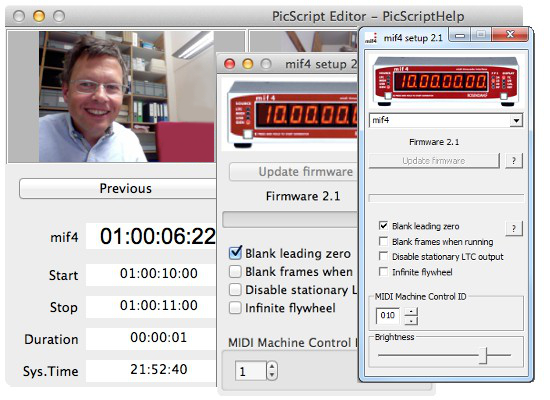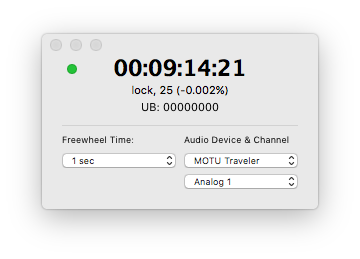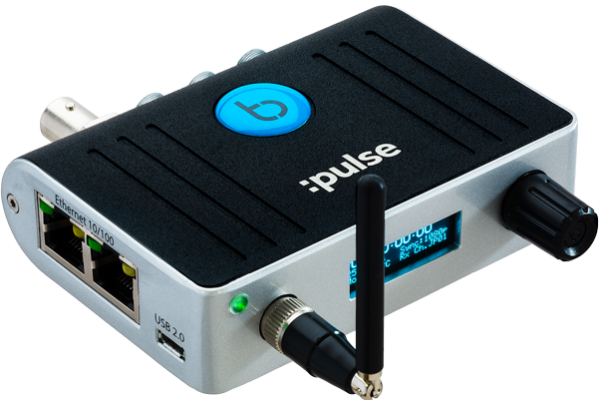About art-net
Generate TimeCode TimeCode Generator is a simple app that allows you to play two channel SMPTE LTC timecode, from within this simple app. We have apps for macOS, Android, Windows and iOS.



Time Code Generator Mac
- Smpte generator social advice Mac users interested in Smpte generator generally download: PPS 2 1.0 Free. SMPTE Reader is the easiest way to convert SMPTE into MIDI-Timecode. Simply feed SMPTE Audio Signal into an Audio Input of your Mac.
- The Denecke TimeCode ToolBox app is designed to Read & Generate LTC time code using your mobile iDevice (running iOS 5.x or higher). The time code reader features a level meter and wave form analyzer (helpful for trouble shooting cables, etc). The incoming time code frame rate is flagged as well.
- Batch timecode synchronization software for mac Tentacle Sync Studio is more than just a syncing software: combined with our Tentacle hardware, it’s the key to syncing simplicity. Download Now min. Required THE SWISS ARMY KNIFE OF TIMECODE. Tentacle Sync Studio not only reads and analyses any kind of timecode, it provides a clear.
- A free, open-source implementation of an LTC timecode generator, great for Linux users with a lot of IT know how. Forms the basis of many of the mobile apps that produce timecode. LTC Timecode Generator for Android (Free version, Pro costs $14) The only Android timecode generator, so I’ll list it here.
Art-Net is a royalty-free communications protocol for transmitting the DMX512-A lighting control protocol and Remote Device management (RDM) protocol over the User Datagram Protocol (UDP) of the Internet protocol suite. It is used to communicate between 'nodes' (e.g., intelligent lighting instruments) and a 'server' (a lighting desk or general purpose computer running lighting control software).

Timecode Generator For Mac Osx
Art-Net is a simple implementation of DMX512-A protocol over UDP in which lighting control information is conveyed in IP packets, typically on a private local area network such as Ethernet. Supported functions include transmitting and receiving lighting data (e.g., fader levels for individual lights, positions of movable lights); management functions such as detecting nodes, updating node control parameters, and transmitting timecodes; and functions that allow nodes to 'subscribe' to 'publisher' nodes so that, for example, nodes A and B can subscribe to node C (C will unicast information to A and B).
More info about Art-Net can be found on Wikipedia - Art-net
